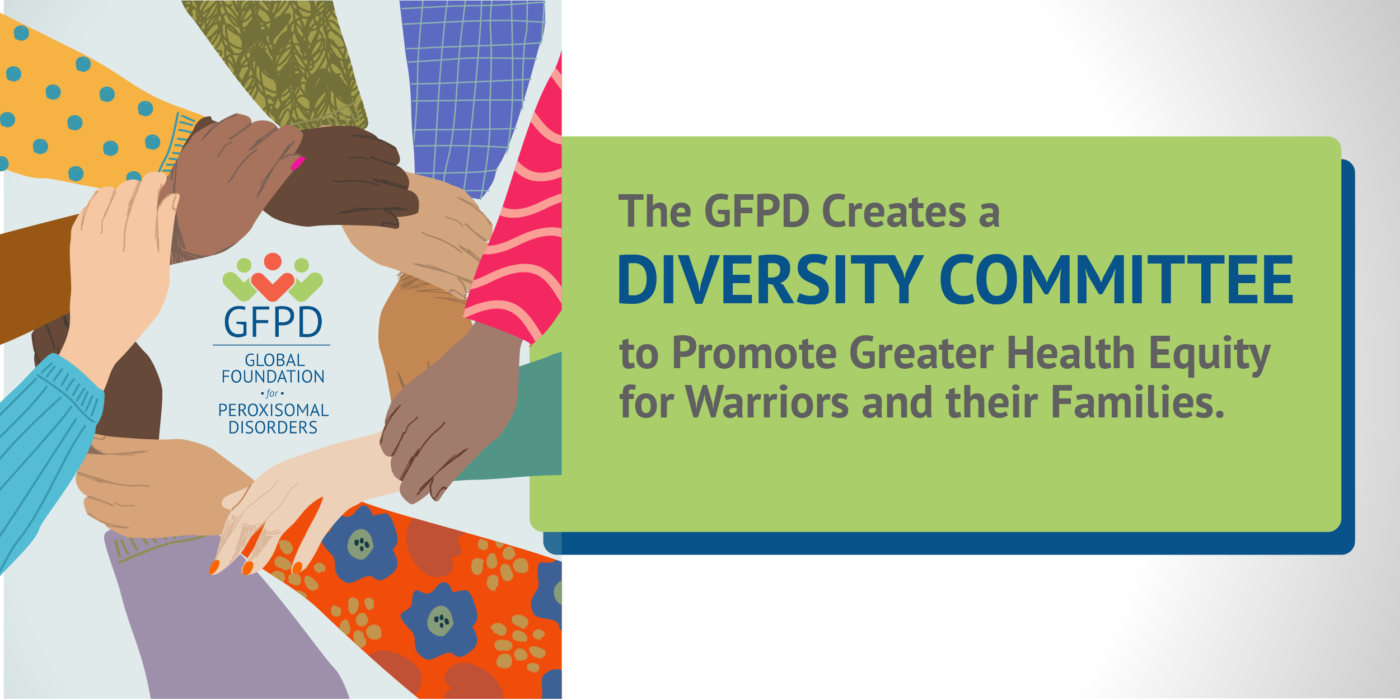
The GFPD Creates a Diversity Committee to Promote Greater Health Equity for Warriors and their Families
To address equity in services and healthcare, the GFPD started at the top.
In 2019, Melissa Bryce, The GFPD executive director and co-founder, recognized that the rare disease network needed to address growing disparities in the care and supports available to patients and their families. More importantly, Bryce saw that built-in systemic inequities in healthcare were having the same negative effects on patients of rare diseases as those diagnosed with more common issues.
“In the United States particularly, if you are a woman, Black, Latinx, Native, or have other comorbidities, our healthcare system can fall short,” Bryce said. “For those in the rare disease world, the disparities always begin before the diagnosis, as the general medical community has limited knowledge of rare diseases in general, but especially in diagnosing rare diseases. Our families with a peroxisomal disorder face uphill climbs from the moment of diagnosis. And those who come from historically excluded communities have even greater battles ahead.”
Bryce worked with the GFPD board to begin identifying and addressing the equity issues.
The board of directors knew that if rare diseases were to become less “rare,” The GFPD would need to focus on diversity, equity and inclusion in all of its programming – from patients and families to scientists, medical professionals and other caregivers.
“I was thrilled to jump in and help institute a diversity committee for the GFPD,” Mousumi Bose, Ph.D., Scientific Advisory Board member, said. “As a scientist with personal experience with peroxisomal disorders, I know first-hand the need for looking at inclusion and diversity on a larger scale for our organization.”
Bose serves along with nearly a dozen other board and committee members bringing expertise in medicine, science, diversity and family experience.
“Since our committee’s inception, we have created a more significant focus on inclusion for our families and in the medical system,” Bryce said. “I now serve on a committee with the National Institutes of Health that addresses equity in health care. The GFPD committee is a landmark in not only our rare disease community but in nonprofits around the country.”
Dan Billingsley is an organizational and board development expert and is a strategic advisor for The GFPD.
“A number of organizations are hiring chief inclusion or diversity officers at the staff level,” he said. “But unless we focus on diversity, equity and inclusion at the board level for organizations, we can’t dismantle some of the systemic problems facing nonprofits who are promoting inclusion. The GFPD is truly a groundbreaking organization by addressing diversity and inclusion issues at the board level, baking in the work into organizational policies, programming and support services.”
Bryce believes that The GFPD will provide a road map for other rare disease organizations and nonprofits looking to address equity in health care and programming.
“I hope that our example can serve as a guide to other organizations,” Bryce said. “Diversity and inclusion must be part of all of our strategic plans and initiatives, as it touches everything we do. The only way we will see better outcomes in care is by being attentive to inclusion.”
For more information about the organization, visit www.thegfpd.org.
